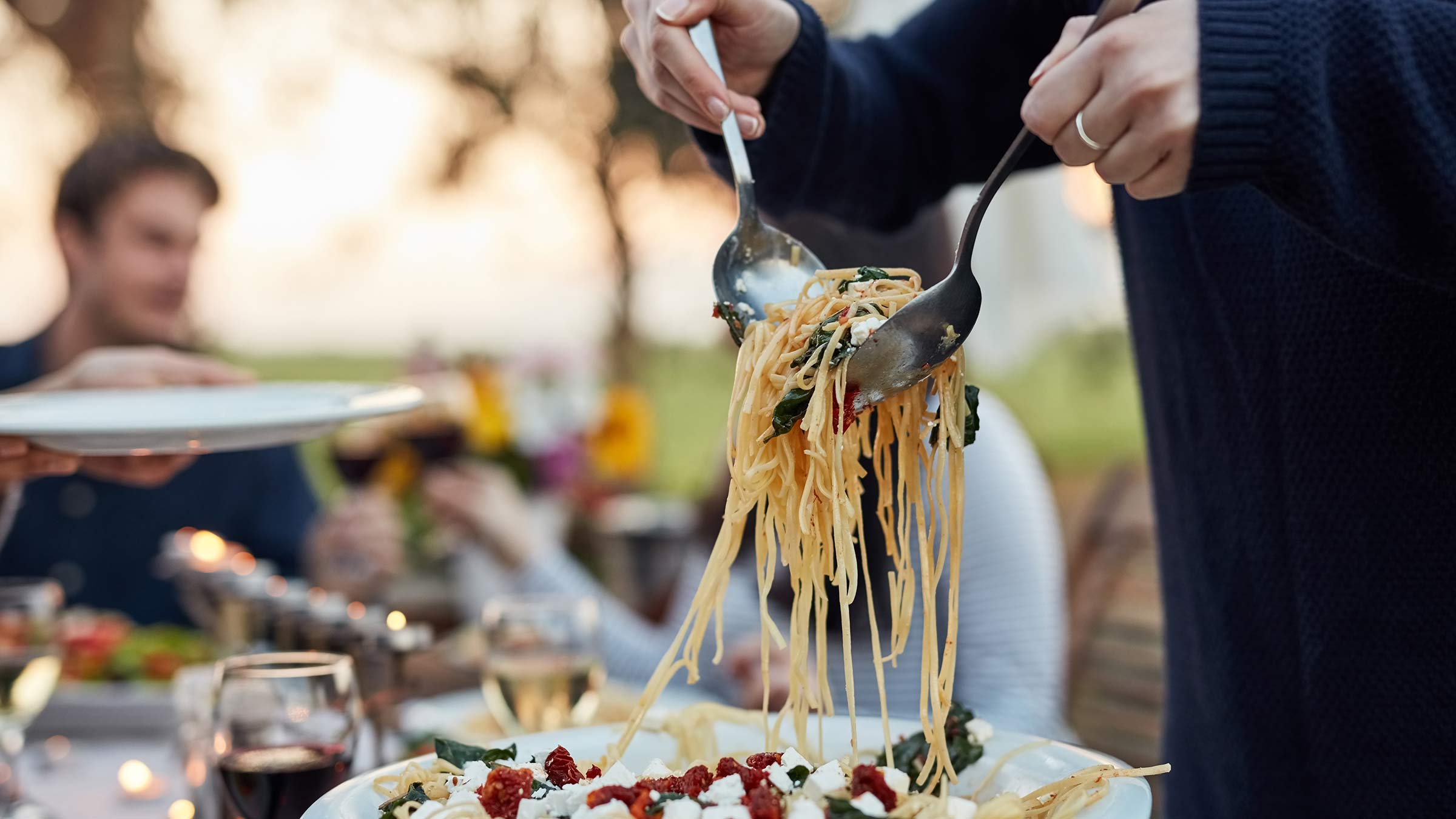
Pasta, glorious pasta — in all its different shapes and sauces.
If you’re watching your carbs either to lose weight or lower your blood sugar or both, you might think you need to keep pasta off your plate entirely. But you may not have to.
There’s an easy trick to reduce the number of calories in pasta and the amount of starch in it that turns into glucose during digestion. The method works for potatoes, rice, beans and some other carbs as well. In fact, it’s something you may already do: Eat them as leftovers.
Eating pasta with fewer calories
Pasta, like all carbs, are made up of mostly starch. But just refrigerating pasta for 24 hours or more, then eating it, cuts the amount of starch in it that your body digests. When pasta is refrigerated, some of the starch in it loses its original structure and forms a new structure that passes through the body without being digested in the same way. That process is called “starch retrogradation.”
So, a portion of the starch is not absorbed and used as calories or glucose in the bloodstream. It’s called “resistant starch.” That means refrigerated pasta has more resistant starch in it. It has fewer calories and leads to a smaller peak in blood glucose after you eat it.
How starch changes in the refrigerator
Even if you were to reheat the pasta, potatoes or rice after they were refrigerated, they’ll still be lower in calories than if you ate them right after cooking. The amount of resistant starch in them may decrease slightly, but those foods still will be less caloric than they were originally.
How long the carb has to be in the refrigerator to convert its starch into resistant starch varies, depending on the type of food. Generally it’s recommended the carbohydrate be refrigerated for at least 24 hours.
On average, resistant starch has a little more than half the calories per gram than regular starch. Per gram, resistant starch has about 2.5 calories versus 4 calories per gram in regular starches.
The concept of resistant starch is not a new one to food scientists. It’s been known for decades. But it’s become a hot topic in nutrition-related research recently because so many people are now living with diabetes or trying to lose weight by lowering their carbs with diets such as the keto and Atkins diets. Most people find those diets unsustainable. We need carbs. They provide an important source of energy. If you cut them out entirely, you may feel sluggish or have less energy to exercise or even do daily tasks.
Foods high in resistant starch
Some carbs have a high amount of resistant starch naturally — without cooking and refrigerating afterward. Eating both types of resistant starches in your diet can provide the valuable energy that carbs give you while promoting an overall more stable and consistent blood sugar level. Some options from both groups include:
- Brown rice
- Potatoes
- Whole wheat pasta
- Whole-grain breads, such as pumperknickel or sourdough
- Oats or barley
- Green bananas or plantains
- Lentils
- Beans
- Quinoa
- Peas
What does resistant starch do to your body?
Resistant starch functions like fiber. Normal, rapidly digesting starches are broken down during digestion in your stomach and your small intestine, then they’re turned into glucose and absorbed quickly. That’s why your blood glucose or blood sugar increases after eating starches.
Resistant starches resist the normal digestive processes. They pass through your small intestines mostly undigested, preventing the immediate rise in blood sugars. Once resistant starch reaches your large intestine, it ferments and feeds the beneficial gut bacteria. Over time, these healthy gut bacteria can improve blood glucose control.
Carbs that can’t be changed
You can only change the content of carbs by cooking and cooling them if they’re starchy carbs, also called complex carbs. Examples of complex carbs are potatoes, rice, pasta, oatmeal and bread. Simple carbs, such as sugar, can’t be changed by refrigerating them. So even if you refrigerate the cake leftover from last night, it’s no lower in calories today.
Does resistant starch help you lose weight?
Resistant starch may help you lose weight by reducing your appetite and helping you feel full longer. To see this result, you would need to regularly include foods high in resistant starch in your diet.
How long does it take for resistant starch to work?
Right after you eat resistant starches, you feel fuller for longer than if you had eaten normal, rapidly digesting starches. However, the benefits to your gut health and insulin sensitivity take longer and vary based on the individual. It may take up to a month to see those benefits.
What are the side effects of resistant starch?
Like fiber, resistant starches can cause bloating and gas, especially if, all at once, you increase the amount you’re eating rather than gradually introducing resistant starch into your diet. It’s important to drink more water as you eat more resistant starches.
When we’re thinking about improving our diet, it’s easy to latch onto one idea and think we can just do that one thing to lose weight or lower our blood sugar. Converting starches into resistant starches is not a magic bullet for weight loss or improving your health. You still need to eat a balanced diet with all the food groups. But this is another simple and easy tool you can use to help reach your goals.

Healthy eating is within your reach!
Make an appointment with our dietitians or nutritionists.
Schedule an appointment



